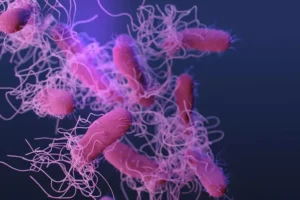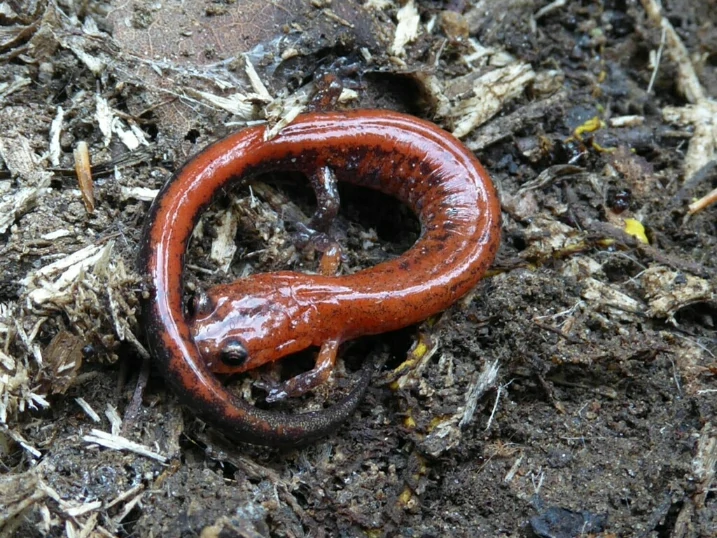Salamanders may look small and quiet, but they are fascinating creatures that need very specific care. Because they live in damp places like forests, wetlands, and near streams, and have smooth, moist skin, many people wonder: can you get sick from touching a salamander?
Yes, it is possible to get sick from touching a salamander but the risk is low if you handle them carefully. Salamanders can carry bacteria like Salmonella, which can make people sick. Washing your hands well after touching a salamander or its tank or habitat makes the risk much smaller.
Knowing what diseases salamanders might carry, how germs spread, and how to protect yourself helps keep both you and the salamanders safe.
Salamander Skin and Why It Matters
A salamander’s skin is thin, soft, and moist. It lets them absorb water and breathe through their skin, but it also makes them very sensitive to changes in their environment, pollutants, or germs.

Their skin may carry tiny organisms, like bacteria, fungi, or parasites. Some of these are harmless, while others can cause disease in amphibians or even humans if you aren’t careful.
What Bacteria Can Salamanders Carry?
Salmonella is one of the main concerns. This bacteria lives in the intestines of many amphibians and reptiles.

It can get onto their skin or the surfaces in their habitat and transfer to humans if you touch them or the tank.
In humans, Salmonella can cause diarrhea, stomach cramps, fever, or vomiting. Healthy adults usually recover, but it can be more serious for children, older adults, or people with weak immune systems.
Other Germs to Know About
Besides Salmonella, salamanders can carry other germs:
- Aeromonas bacteria: Found in water, these can cause skin infections if they get into cuts.
- Fungal spores: Some fungi infect amphibians, and they might cause allergies or mild infections in sensitive people.
- Parasites: Some salamanders carry parasites, but it’s rare for these to spread to humans.
Even though these germs exist, simple hygiene steps make the risk very small.
How Do Infections Happen?
People usually get sick if germs get into the body through:
- Cuts or scrapes on the skin
- Eyes, nose, or mouth
- Eating or drinking something contaminated
Just touching a salamander’s skin is unlikely to make you sick unless germs get into one of these entry points.
How to Stay Safe
You can prevent illness with easy steps:
- Wash your hands well with soap and water after touching salamanders or their tank
- Avoid touching your face before washing your hands
- Wear gloves if you have cuts or sensitive skin
- Don’t let salamanders near your mouth or eyes
- Keep their tanks clean and healthy
These steps protect both you and the salamander.
Are Salamanders Dangerous as Pets?
Salamanders are usually safe to keep. They don’t bite or attack, and if you follow hygiene rules, they are unlikely to make you sick.

Their skin is delicate, though. Rough handling or too much touching can hurt them. Learning how to care for and handle salamanders properly keeps both you and your pet safe.
Who Should Be Extra Careful?
Some people should be more careful:
- Young children who don’t understand hygiene
- Older adults or anyone with a weak immune system
- People with open cuts or skin problems
- Pregnant women, because their immune system changes
If you fall into one of these groups, it’s best to avoid direct contact or wear gloves and wash your hands.
Wild Salamanders
Wild salamanders can carry the same germs as pets, plus extra risks from pollution or parasites.
If you come across one in nature, it’s best to watch it without touching. If you need to handle one for rescue or research, follow strict hygiene rules.
Environmental Factors That Affect Risk
Where a salamander lives can change how many germs it has:
- Water quality: Polluted or stagnant water can have more bacteria
- Habitat cleanliness: Places with lots of animals or waste can be riskier
- Temperature: Warm weather can let germs grow faster
Keeping salamanders in clean and healthy environments lowers risk for both them and humans.
Signs You Might Be Sick
After handling a salamander, watch for:
- Stomach cramps or diarrhea
- Fever or chills
- Skin redness or irritation
- Red or itchy eyes
See a doctor if these symptoms last or get worse.
When to Call a Doctor
Talk to a healthcare professional if you notice:
- Severe stomach problems lasting more than two days
- Signs of infection in cuts or skin
- Allergic reactions like swelling or trouble breathing
Early treatment helps you recover faster.
Conclusion
So, can you get sick from touching a salamander? Yes, it’s possible, but the risk is low if you wash your hands and don’t touch your face.
Salamanders are amazing creatures that you can safely enjoy if you handle them carefully. Respecting their delicate skin and following simple safety steps keeps both you and the salamander healthy.
By knowing the risks and taking precautions, you can enjoy close encounters with salamanders without worry.
Hi, my name is Ezra Mushala, i have been interested animals all my life. I am the main author and editor here at snakeinformer.com.

